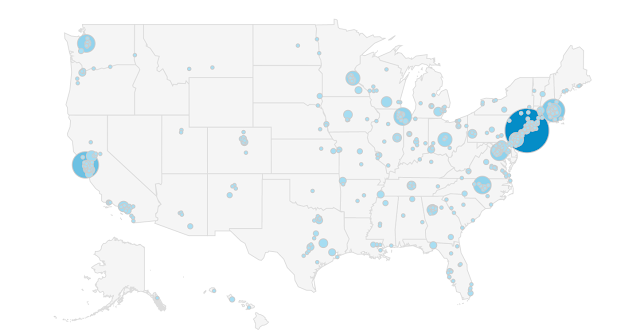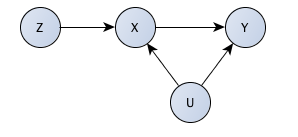I use Google Analytics to monitor this blog, but don't check in much. Was playing yesterday and discovered you can split reader geography down to the city level. It's mapped above.
- I chose the right place (NYC) to live.
- If you can't do NYC, then the Acela corridor is the right place to be as a Bayesian economist.
- Twin cities, Chicago, Columbus OH and the research triangle round out the big cities in the
- In the West, it's all SF and Seattle.
- No Nevada! No Wyoming!
- Los Angeles disappoints.


